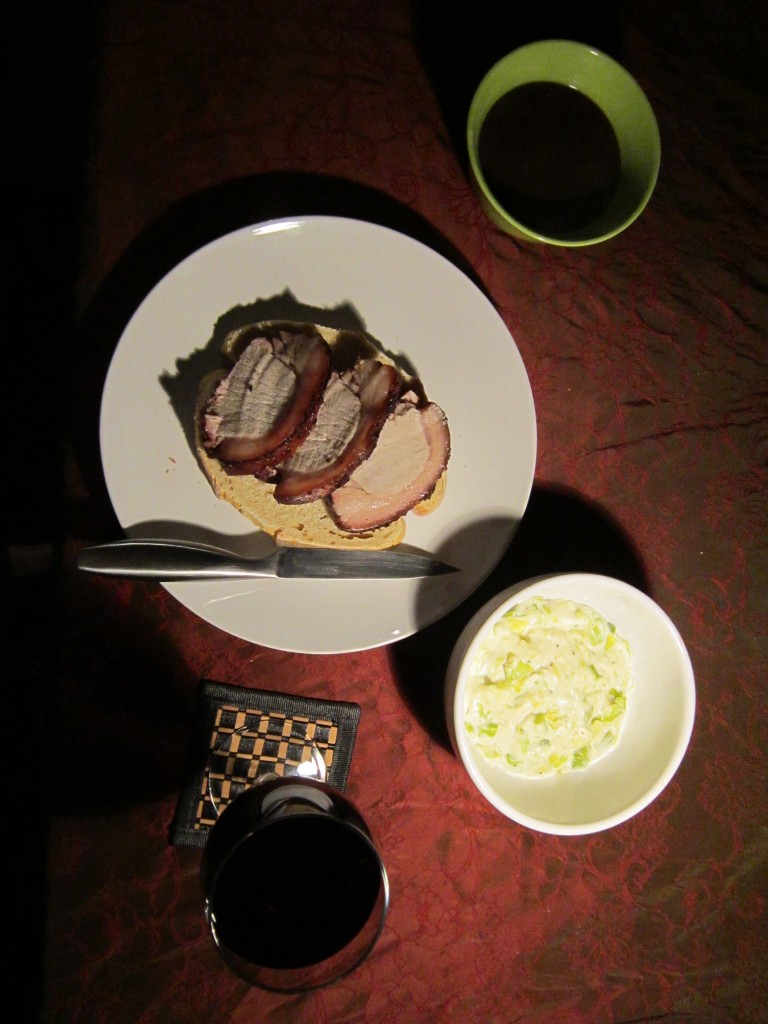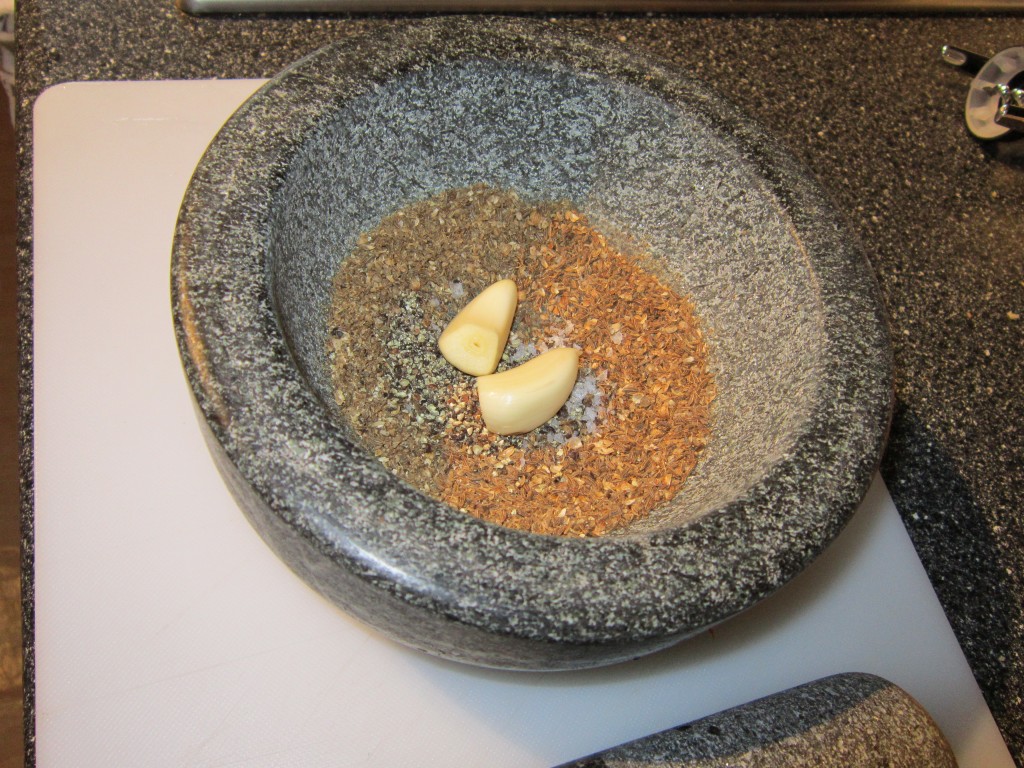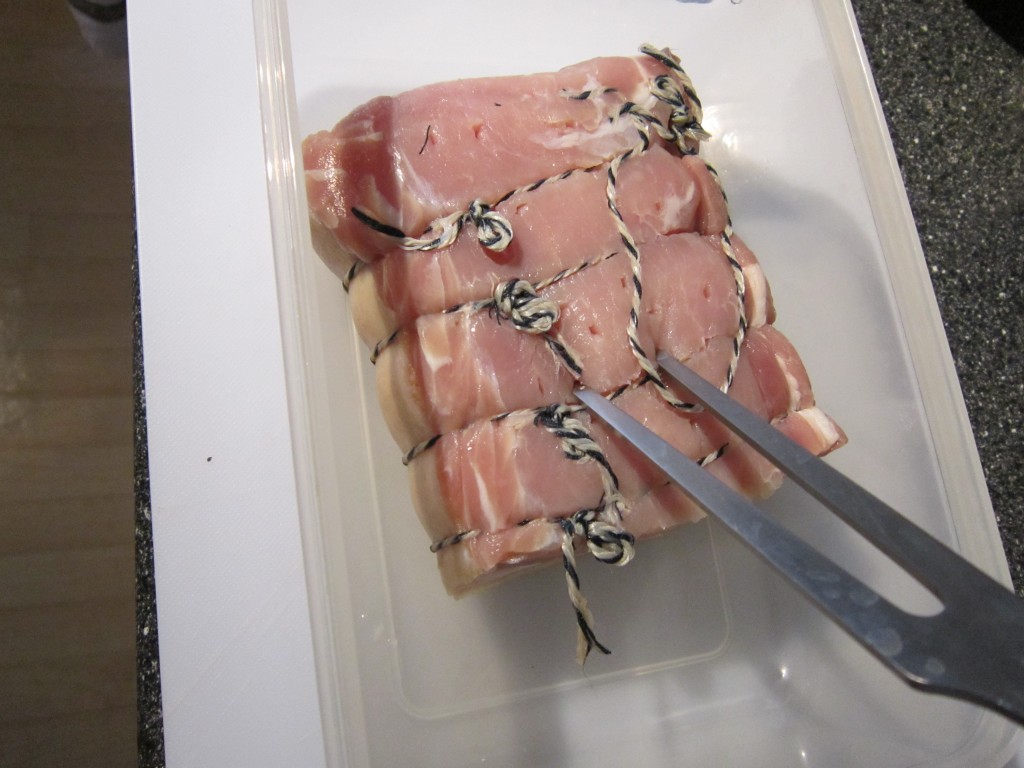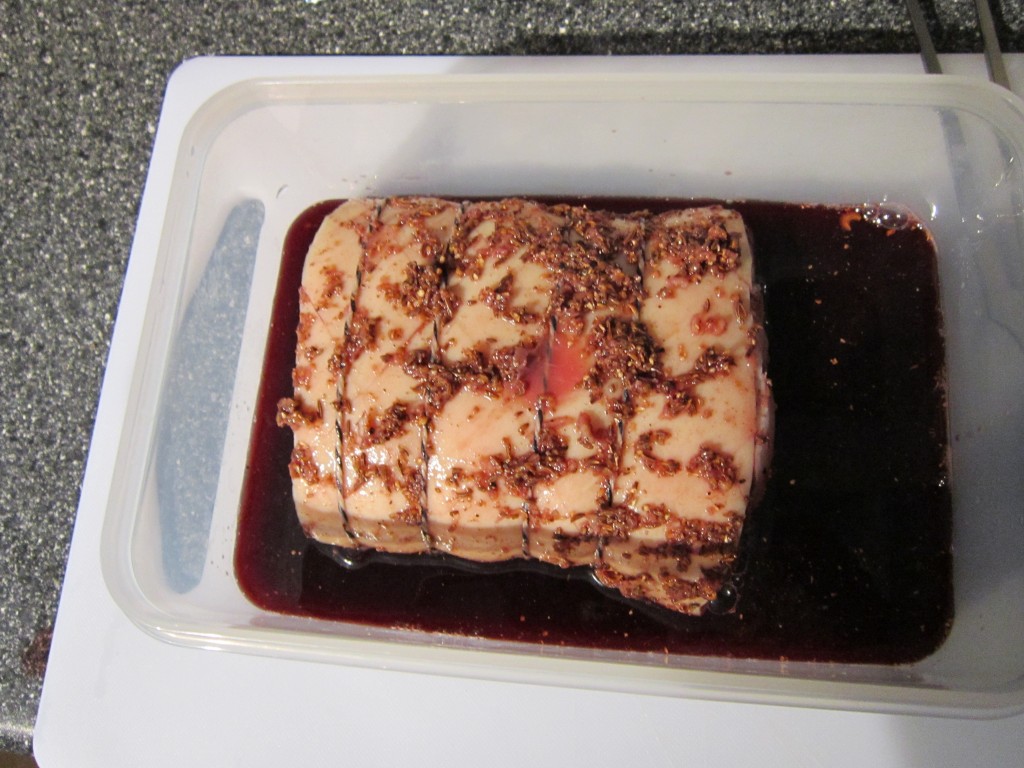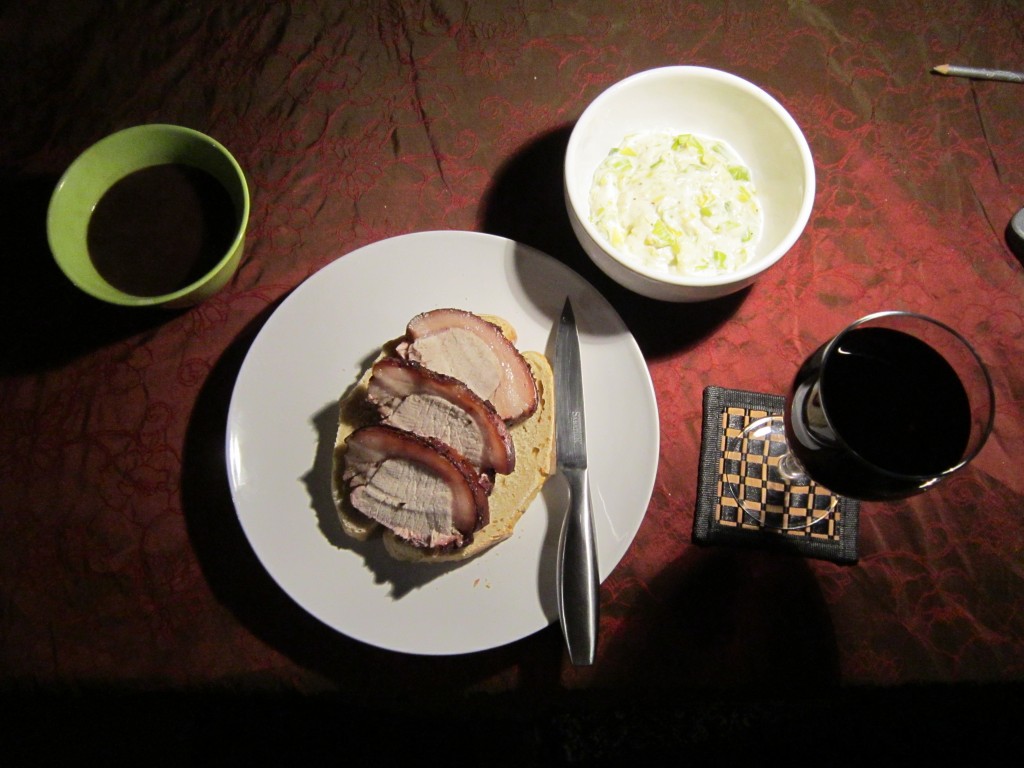For the Bank Holiday weekend I decided to do something special – Cormarye, which is roasted pork in a red wine, caraway, coriander and garlic marinade, with the drippings made into an accompanying sauce and served on a trencher of bread, with “blaunchyd porray”, or creamed leeks. I’ll describe the leeks in another entry, and for now just stick with the Cormarye.
Cormarye
Take Colyandre, Caraway smale grounden, Powdour of Peper and garlec ygrounde in rede wyne, medle alle þise togyder and salt it, take loynes of Pork rawe and fle of the skyn, and pryk it wel with a knyf and lay it in the sawse, roost þerof what þou wilt, & kepe þat þat fallith þerfro in the rosting and seeþ it in a possynet with faire broth, & serue it forth witþ þe roost anoon.
This is another recipe from the Forme of Cury, and again I’m using the modern translation of it from the Hieatt, Butler and Hosington book Pleyn Delit: Medieval Cookery for Modern Cooks.
It couldn’t be simpler. Basically you pound the dry ingredients together in a mortar and pestle to a paste, add the wine, prick the meat and let it marinade in a container for a couple of hours, after which you roast it.
You will need:
- Pork loin for roasting – Hieatt and Butler call for 2lb, but I’m going smaller with 560g.
- 1-2 tsp caraway seeds
- 1-2 tsp coriander seeds
- 2-3 garlic cloves
- ¼ tsp salt
- ¼ tsp pepper
- 240ml (1 cup) red wine
- Chicken or pork stock
- Breadcrumbs (optional – you could use the top of the trencher, see below)
- Sourdough round loaf, for trencher.
1. Put the seeds in the mortar and pound them as fine as you can get them. When you’re satisfied, add the salt, pepper, and garlic, pounding everything into a mulchy sort of paste, as shown. (Your kitchen. however, doesn’t have to be as heroically filthy as mine).
2. Add the wine and give it all a stir.
3. Take out your pork, and give it a dab with a paper towel. Prick it all over with a skewer or meat fork so that the marinade can get into the meat. (The medieval recipe tells me to “fle the skin” which I guess means flay or remove it, but the modern recipe omits this step, so I kept it on.)
4. Pour the marinade mixture into a container, ideally one not much bigger than the roast itself, or you could do it in a waterproof bag. Put the meat in, ensuring it’s well covered. Leave to marinate for two hours.
5. Pre-heat the oven to 220°. You need to work out the cooking time, which is 25 minutes plus 25 minutes for each extra 500g. Place the roast in a shallow roasting tin and blast it for 30 minutes at 220º. Then turn the heat down to 180° and leave it for the rest of the cooking time, basting occasionally.
6. When the roast is done, take it out of the tray and leave it to rest for 15 minutes. In the meantime, pour off the grease from the top of the juices in the pan, and put these into a small saucepan. Add as much as of the stock as you require to make up the sauce you need and bring it to the boil. You can also thicken this sauce with breadcrumbs, adding them until you achieve the right thickness and then blitzing the sauce with a blender.
Your roast is now ready to serve.
If you want to go full native, medieval food was traditionally served on a bread “trencher”, a loaf with the top sliced off. Meat was placed in the trencher but sauces were served seperately, and guests dipped their morsels of meat into shared bowls of sauce.
I didn’t have a trencher, but I had a bit of sourdough loaf, so laid the meat out on that:
Was it nice?
Delicious, actually. The meat had this sour-spicy thing going on which was very different and spoke of an intriguing cultural alienness – it would be hard to name a world cuisine it resembled, though possibly Eastern European would be nearest. And the marinade dyed the exposed meat this interesting shade of purple, which was kind of cool.
It would definitely be worth considering if you fancied a change.
